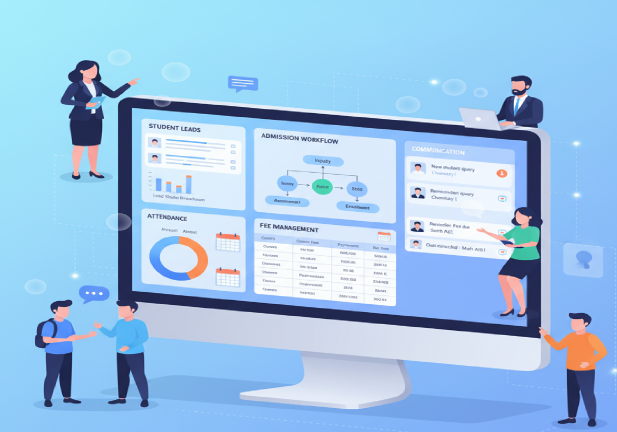In todays rapidly evolving realm of mobile app development, cross-platform app development has become a game-changer. It allows developers to create apps that can run on multiple operating systems, such as Android and iOS, using a single codebase. This not only saves time and resources but also extends your apps reach to a wider audience. In this blog, were going to explore the world of cross-platform app development and provide valuable tips and tricks to help you become a pro in this exciting field. Well also highlight the significance of mobile app development companies, whether they specialize in Android or iOS, in guiding you through the journey of cross-platform development.
The Surge in Cross-Platform App Development
Before we dive into tips and tricks, lets understand why cross-platform app development is all the rage:
- Cost-Efficiency: Developing separate native apps for Android and iOS can be expensive. Cross-platform development reduces costs since you can use a single codebase for multiple platforms.
- Speedier Development: Cross-platform tools and frameworks streamline the development process. You can write code once and deploy it on various platforms, saving development time.
- Consistency: Cross-platform apps offer a unified look and feel across different devices and platforms, ensuring a consistent user experience.
- Broader Reach: By developing cross-platform apps, you can reach a larger audience as your app becomes accessible to both Android and iOS users.
Now that weve established the benefits, lets explore some tips and tricks to master cross-platform app development.
Tip 1: Choose the Right Cross-Platform Framework
Selecting the appropriate cross-platform framework is a pivotal first step. There are several options available, each with its unique strengths and weaknesses. Some popular cross-platform frameworks include React Native, Flutter, Xamarin, and PhoneGap.
- React Native: Developed by Facebook, React Native is celebrated for its user-friendliness and strong community support. It allows you to build mobile apps using JavaScript and React, providing nearly native performance.
- Flutter: Created by Google, Flutter is known for its visually stunning, natively compiled applications. It employs the Dart programming language and offers a rich set of widgets for crafting user interfaces.
- Xamarin: Owned by Microsoft, Xamarin enables developers to use C# for building cross-platform apps. It provides extensive libraries and tools, making it an excellent choice for businesses within the Microsoft ecosystem.
- PhoneGap (Apache Cordova): PhoneGap enables the development of cross-platform apps using web technologies like HTML, CSS, and JavaScript. Its a solid choice if you have a web development background.
The right framework for your project depends on factors such as your teams expertise, the apps complexity, and specific requirements. Mobile app development company in Noida, specializing in either Android or iOS, can assist in making this critical decision based on your projects needs.
Tip 2: Design for Both Platforms
While cross-platform development offers the advantage of code reusability, its important to remember that Android and iOS have distinct design guidelines. To master cross-platform app development, your app should conform to the design principles of both platforms.
- Material Design (Android): Android apps typically follow Googles Material Design guidelines, which emphasize bold visuals, intuitive navigation, and consistent use of icons and typography.
- Human Interface Guidelines (iOS): For iOS, adhere to Apples Human Interface Guidelines, which prioritize simplicity, clarity, and seamless user interactions.
Ensuring your app follows the design guidelines of each platform enhances user experience and makes your app feel native to both Android and iOS users.
Tip 3: Optimize Performance
One of the common concerns with cross-platform app development is performance. While cross-platform frameworks have made significant improvements in this regard, its essential to keep performance optimization in mind.
- Use Native Modules: Leverage native modules for platform-specific tasks, as this can significantly improve performance.
- Test and Optimize: Continuously test and optimize your app for both platforms. Use performance monitoring tools to identify and address bottlenecks.
- Keep Third-Party Plugins in Check: Be mindful of the third-party plugins you use. Too many plugins can negatively impact performance.
Mobile app development companies, with their experience in Android and iOS app development, can help you identify performance bottlenecks and implement optimization strategies for your cross-platform app.
Tip 4: Maintain Consistency
Consistency is key in cross-platform app development. Its crucial to ensure that your app looks and behaves consistently on both Android and iOS. This consistency includes not only the user interface but also features, functionalities, and the overall user experience.
- Regular Testing: Conduct thorough testing on both Android and iOS devices to identify any inconsistencies.
- Version Control: Use version control systems, such as Git, to manage your codebase and ensure that changes made for one platform do not negatively impact the other.
- User Feedback: Encourage users to provide feedback and report any inconsistencies or issues, and be prompt in addressing their concerns.
Tip 5: Embrace Responsive Design
Responsive design is a cornerstone of cross-platform app development. It involves creating layouts and user interfaces that adapt to different screen sizes and orientations. To master cross-platform development, you need to embrace responsive design principles.
- Use Flexbox and Grid Systems: Implement responsive layouts using flexbox and grid systems to ensure that your app adjusts to various screen sizes.
- Media Queries: Use media queries to apply different styles and layouts based on the devices screen size.
- Test on Various Devices: Regularly test your app on a range of devices to ensure the responsive design works as intended.
Tip 6: Prioritize Platform-Specific Features
While the goal is to create a single codebase, there may be platform-specific features that are essential for providing the best user experience. These could include integration with platform-specific APIs, such as Androids NFC capabilities or iOSs CoreML for machine learning.
To master cross-platform app development, you need to strike a balance between code reusability and platform-specific functionality. Utilize conditional statements to ensure that platform-specific code is executed when necessary.
Tip 7: Leverage Community and Resources
Cross-platform app development has a vibrant community, with developers and resources available to assist you. Utilize forums, online communities, and documentation for your chosen framework. Learn from the experiences of others and seek guidance when facing challenges.
Mobile app development companies, with their expertise in Android and iOS app development, can also provide valuable insights and support in navigating the intricacies of cross-platform development.
Tip 8: Regularly Update Your App
Both Android and iOS receive updates regularly, which can introduce new features and changes. To maintain a successful cross-platform app, you need to stay updated and ensure your app is compatible with the latest versions of both platforms.
Mobile app development companies offer ongoing support and maintenance services, ensuring that your cross-platform app remains up-to-date and functional as the mobile operating systems evolve.
Conclusion
Cross-platform app development is a powerful approach that allows you to create apps for both Android and iOS using a single codebase. By choosing the right framework, adhering to platform-specific design principles, optimizing performance, maintaining consistency, embracing responsive design, prioritizing platform-specific features, and leveraging the community and resources, you can master the art of cross-platform app development.
Mobile app development companies, specializing in Android or iOS, can play a vital role in guiding you through the complexities of cross-platform development. Their expertise can help you make informed decisions and ensure the success of your cross-platform app. With the right strategies and support, you can build apps that reach a broad audience and offer a seamless user experience on both Android and iOS platforms.












.jpg)